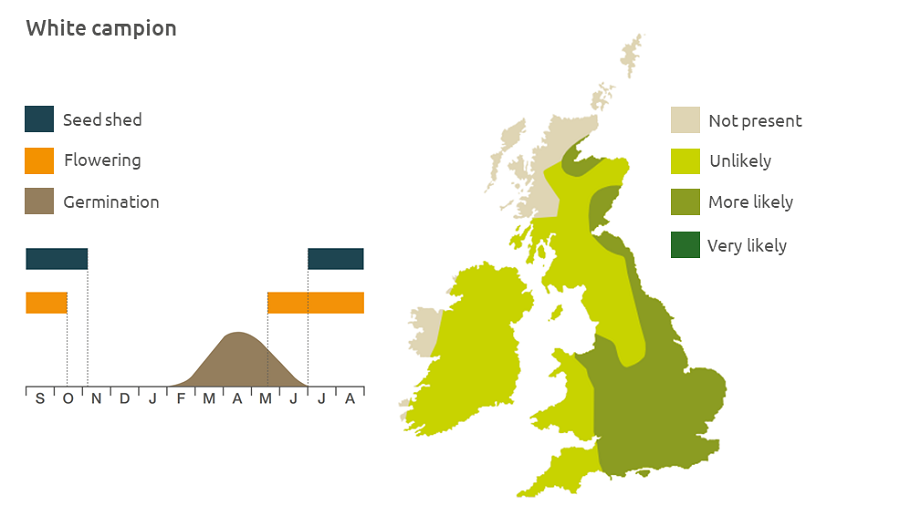- Home
- Knowledge library
- Distribution and biology of white campion in the UK
Distribution and biology of white campion in the UK
White campion is a common broad-leaved weed of arable land. Find out how to identify and control it.
Overview
White campion (Silene latifolia) is common on arable land, emerging largely in spring crops, but it can persist to produce large plants in perennial/biennial crops. About half of overwintering adult plants can survive a hard winter.
Description
It is a softly hairy, biennial or short-lived perennial dicotyledon, 30–100 cm tall. The leaves are pointed and reasonably broad. Male and female flowers are white with five deeply notched petals.
Key features
Young plant: First true leaves are bluntly pointed.
Flowers: White, deeply notched petals.

Location and life cycle

Geographic distribution
White campion grows to an altitude of 425m and is found on arable fields, waste ground and road verges.
Soil type
It prefers deep well-drained soils.
Seed statistics
- Seed longevity: >5 years
- Germination depth: 5 cm
- Seed weight: 7.3 mg
- Seeds/flower: 230
- Seeds/plant: 6,000
Management
It is seldom a problem in winter rotations, or where there are grass ley breaks. Large plants can be pulled in some crops or cut before flowering to prevent seeding.
For advice on herbicides, please speak with your agronomist or adviser.
When was this information last updated?
This page is based on content from the encyclopaedia of arable weeds publication. Since it was first released in 2008, the publication has been redesigned several times but not revised. However, it remains a good foundation for general information on the distribution and biology of weeds.

